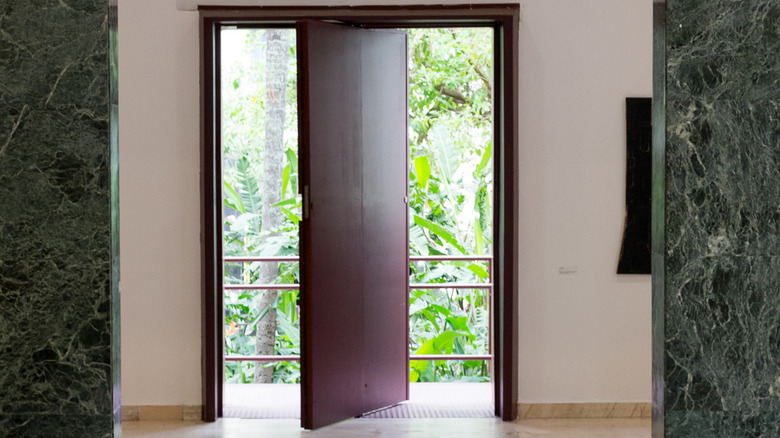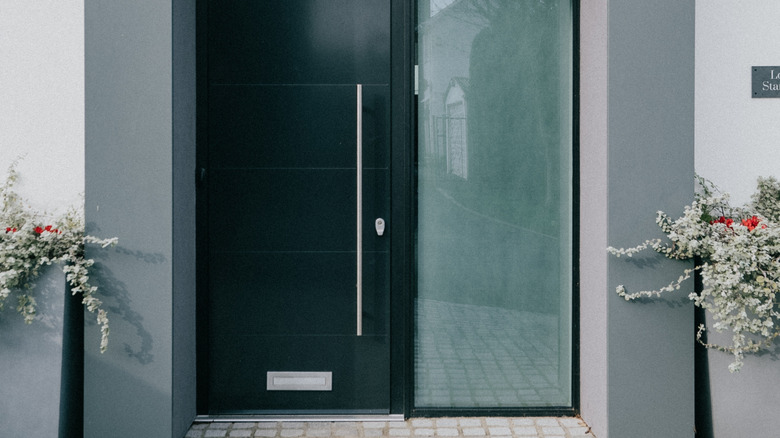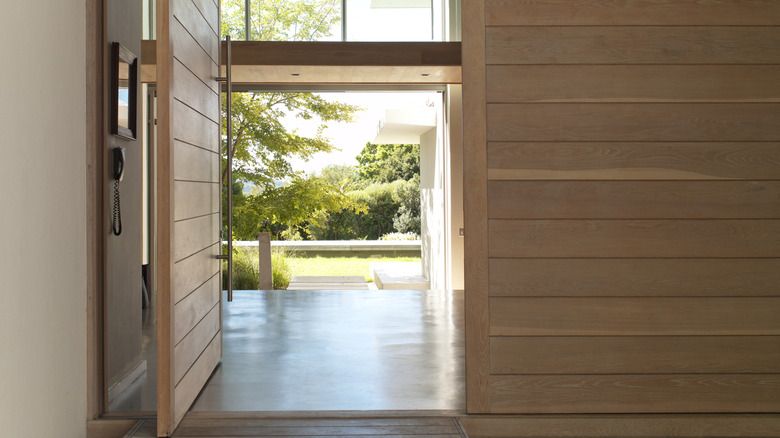Pivot Doors Are Great For Small Spaces, But They Have Some Hidden Disadvantages
Are you ready for a change when it comes to your type of doors? Sure, you can go with a standard hinged door, but once you discover pivot doors and what sets them apart from the rest, you might be hooked. Pivoting doors rotate on fixed hinges that are mounted at the top and bottom of the door, away from either side. The result is a unique door with a high-end feel that opens and closes smoothly. However, this style of door isn't ideal in all situations because it's not fully airtight and makes it difficult to apply weatherstripping. The installation is tricky and the doors aren't cheap. Large, heavy pivot doors are also prone to warping and wear on the hinges due to the weight.
For many homeowners, the truly unique look and functionality of a door that pivots rather than swings outweighs the downsides. The hinges are hidden inside of the door, so the setup offers a clean look, almost as if the panel is floating. When space is tight, a pivoting door is often a good solution. Instead of the full width of the door swinging inward or outward, the door pivots where it is. You still need some clearance for the door, but the width is split between the two spaces. Before you decide if those perks make a pivot door the best option for you, consider the disadvantages you might be overlooking.
Pivot doors are more work and cost more
Pivot doors are larger than traditional hinged doors so that the hinge sits away from the door and still provides a large enough opening to walk through easily. The larger size and unique design of this door style often means they have a bigger price tag than hinged doors. If you don't already have a large entrance, you may need to expand the opening, which creates additional labor and expenses.
To install a pivot door, you need to drill into the top of the opening and into the floor instead of simply anchoring a frame to the opening and attaching hinges to the side of the frame. The drilling process is often invasive and requires precision to prevent problems — proper alignment is essential for the door to pivot correctly. The specialized installation along with the size and weight of a pivot door typically requires professional installation, which increases the overall project cost.
A pivot door might also require more maintenance and repairs in the future. Because the hinges are so unique, the repair work is often best left to a professional, which increases the cost of the repairs. For example, larger pivot doors tend to be heavy, which isn't a problem for opening and closing because of the special hinges. However, the top hinge sometimes loosens over time and the door pulls down. Having the door lifted and the hinge tightened helps fix the problem and keep the door from dragging along the floor. You'll also need to lubricate both hinges regularly to help the door swing smoothly.
Pivot doors aren't airtight and are vulnerable to damage
Manufacturers make pivot doors as insulated and weather-resistant as possible, but they don't seal as tightly as hinged doors. Exterior pivoting doors might allow drafts, which could put more pressure on your HVAC system to keep your home comfortable. Door draft blockers might help a bit, but they take away from the look of the door and often can't block everything. As pivot doors aren't airtight, they might also allow water leaks. These issues aren't a problem for interior doors, but they can be a dealbreaker for exterior doors. An exterior entrance that's protected by a porch or overhang might be better suited for a pivot door than an unprotected entrance.
Any door that's made of wood can warp, but a wooden pivot door and larger doors in general are more susceptible to warping. The size and lack of support are what puts pivot doors at risk of damage. Traditional doors feature side hinges to keep them stable, but pivot doors don't have that stability. Without the support, they can warp more easily when they're exposed to moisture, humidity, and temperature changes. Some manufacturers build reinforced pivot doors that stand up to warping better than models with traditional construction methods.
The weight of many pivot doors can also cause problems. Over time, all that weight can strain the hinges, potentially damaging them. Heavier materials can also damage the frame and surrounding structure, which could cause the door to drag. Framing for a pivot door needs to be secure with screws being used to anchor the frame to the studs and header to minimize weak spots.


